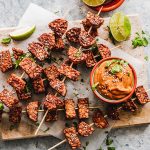The Best Fluffy Pancakes recipe you will fall in love with. Full of tips and tricks to help you make the best pancakes.
Ketogenic diets—a subset of low carb diets—have been around for decades, with different forms of ketogenic diets being used to help facilitate weight loss and manage conditions like diabetes and epilepsy.
When following a keto diet, some people may find it difficult to work out the right foods to eat and when to eat them. Meal plans may help people get used to the diet or stick with it.
The keto diet is a high fat, low-carbohydrate diet. Potential benefits of the keto diet plan include weight loss and fat loss.
Though various sources report different percentages, a keto diet includes approximatelyTrusted Source:
- 55% to 60% fats
- 30% to 35% protein
- 5% to 10% carbohydrates
To stick to these macronutrient ratios, people may benefit from meal planning.

What is a keto meal?
In the keto diet, most of someone’s daily calories come from fats, while lesser amounts come from proteins. Meat, fish, eggs, and dairy feature heavily in the keto diet.
Fiber is also important to include in a keto diet. Fiber may help toTrusted Source lower cholesterol, improve digestive function, and prevent constipation.
When the body cannot rely on carbohydrates for energy, it must burn fat for fuel. This results in a buildup of acids called ketones in the body. This results inTrusted Source a bodily state of ketosis.
People may follow a keto plan for a set amount of time before altering their diet to include more carbohydrates and less fat.
According to a 2020 review, a keto diet may help to improve weight loss and blood pressure, triglycerides, and cholesterol levels. However, these changes may not last in the long term, after 12 months.
Potential Benefits to Know Before Starting the Ketogenic Diet
Research supports considering a ketogenic diet in three circumstances: to treat epilepsy (in the case of the classic ketogenic diet), to help stabilize blood sugar and aid weight loss in type 2 diabetes management, and to generally support weight loss, says Mattinson (though the last two purposes still need to be studied more).
Another thing to keep in mind: The potential benefits of keto discussed here are for the popular, standard ketogenic diet, not other spins on the keto diet, such as the cyclical ketogenic diet or the targeted ketogenic diet. Those keto diets have even less research on them. While the classic keto diet has a wealth of research about its benefits for those with epilepsy, we won’t be discussing that here either.
Keto and Diabetes
Theoretically speaking, it makes sense that keto could benefit people with diabetes, since the diet calls for moderating carbohydrate intake. And that lower carb intake has the potential to increase insulin sensitivity in individuals who are managing diabetes, as research suggests.
The good news: Mattison called research on keto supporting blood sugar management in people with diabetes “promising.” “A ketogenic diet may cause a reduction in A1C — a key test for diabetes that measures a person’s average blood sugar control over two to three months — something that may help you reduce medication use,” she says.
Despite the ability of keto to lower blood sugar levels, one big concern is that you eat a lot of fat on keto, and those may be saturated fats, which are unhealthy and associated with a higher risk of cardiovascular disease, or heart disease, when eaten in excess.
In one trial involving 33 people with prediabetes or diabetes, going on a ketogenic diet or a Mediterranean diet, which is a type of plant-based diet, for 12 weeks improved blood sugar control, as measured by A1C levels. That said, neither the low-carb, high-fat diet nor the plant-based diet performed better than the other. One benefit of the low-carb diet was that it reduced triglycerides better than the Mediterranean diet, and yet there were downsides: The keto diet increased LDL (“bad”) cholesterol, and those on the diet got fewer nutrients, particularly folate, vitamin C, magnesium, and fiber, because of everything that the keto diet cuts out (e.g., fruits, whole grains). The overall takeaway, researchers said, is that it’s best to work with your clinician on making an informed choice that is suited your health concerns, food preferences, and lifestyle.
Despite the potential blood sugar benefits of keto, because people with type 2 diabetes have an increased risk of heart disease, there is a specific concern that eating so much saturated fat may drive up LDL cholesterol levels and further increase the odds of heart problems. So, if you have type 2 diabetes, talk to your doctor before attempting a ketogenic diet, especially if you have other risk factors for heart disease, such as high blood pressure. The doctor may recommend a different weight loss diet for you that may help improve your blood sugar levels, such as a reduced-calorie diet.
Those with epilepsy should also consult their doctor before using a ketogenic diet as part of their treatment plan. If you do opt to go through with the keto diet, consider working with a registered dietitian nutritionist who is also a certified diabetes care and education specialist. They can help you develop a healthy low-carb meal plan that is high in fat but low in saturated fats, and which contains plenty of healthy foods such as low-carb veggies.
Besides diabetes, the keto diet may also help improve short- and long-term cognition among people who are living with Alzheimer’s disease and experiencing mild cognitive impairment, according to a systematic review of randomized controlled trials. Researchers caution that further research is needed to confirm these findings and prove a cause-and-effect relationship between the ketogenic diet and preventing dementia.
Keto and Weight Loss
Looking to lower your body fat percentage? You’ve probably heard that keto diets can help — and that they can make a big impact on your weight right away. There may be some truth to that notion, although how much weight you lose will vary by individual.
“Ketogenic diets will cause you to lose weight within the first week,” says Mattinson. Thanks to its low-carb nature, keto will force the body to first use up all its glycogen stores, which is the storage form of carbohydrates, she explains. With depleted glycogen, you’ll drop water weight. While it can be motivating to see the number on the scale go down, keep in mind that most of this is water loss initially.
But the ketogenic diet can also be an effective weight loss option over time. One review suggested that this low-carb diet can spur fat loss in people with obesity when used for a couple of weeks and for up to one year. And a meta-analysis noted that one likely reason for weight loss is that all of the fat consumed when on this diet may suppress hunger.
One downside of the ketogenic diet for weight loss is that it’s difficult to maintain, especially compared to a traditional diet or other diets that have less stringent rules. “Studies show that weight loss results from being on a low-carb diet for more than 12 months tend to be the same as being on a normal, healthy diet,” says Mattinson. While you may be eating more satiating fats (like peanut butter, regular butter, or avocado), the very low-carbohydrate nature of keto means that you are way more limited in terms of what’s allowed on the diet, which can make everyday situations, such as eating dinner with family or going out with friends, far more difficult. Because people often find this diet tough to sustain, it’s easier to rely on as a short-term diet than as a long-term lifestyle.
Keto Diet 7-Day Meal Plan
Day 1
Breakfast Scrambled eggs in butter on a bed of lettuce topped with avocado
Snack Sunflower seeds
Lunch Spinach salad with grilled salmon
Snack Celery and pepper strips dipped in guacamole
Dinner Pork chop with cauliflower mash and red cabbage slaw
Day 2
Breakfast Bulletproof coffee (made with butter and coconut oil), hard-boiled eggs
Snack Macadamia nuts
Lunch Tuna salad stuffed in tomatoes
Snack Roast beef and sliced cheese roll-ups
Dinner Meatballs on zucchini noodles, topped with cream sauce
Day 3
Breakfast Cheese and veggie omelet topped with salsa
Snack Plain, full-fat Greek yogurt topped with crushed pecans
Lunch Sashimi takeout with miso soup
Snack Smoothie made with almond milk, greens, almond butter, and protein powder
Dinner Roasted chicken with asparagus and sautéed mushrooms
Day 4
Breakfast Smoothie made with almond milk, greens, almond butter, and protein powder
Snack Two hard-boiled eggs
Lunch Chicken tenders made with almond flour on a bed of greens with cucumbers and goat cheese
Snack Sliced cheese and bell pepper slices
Dinner Grilled shrimp topped with a lemon butter sauce with a side of asparagus
Day 5
Breakfast Fried eggs with bacon and a side of greens
Snack A handful of walnuts with a quarter cup of berries
Lunch Grass-fed burger in a lettuce “bun” topped with avocado and a side salad
Snack Celery sticks dipped in almond butter
Dinner Baked tofu with cauliflower rice, broccoli, and peppers, topped with a homemade peanut sauce
Day 6
Breakfast Baked eggs in avocado cups
Snack Kale chips
Lunch Poached salmon avocado rolls wrapped in seaweed (rice-free)
Snack Meat-based bar (turkey or pork)
Dinner Grilled beef kebabs with peppers and sautéed broccolini
Day 7
Breakfast Eggs scrambled with veggies, topped with salsa
Snack Dried seaweed strips and cheese
Lunch Sardine salad made with mayo in half an avocado
Snack Turkey jerky (look for no added sugars)
Dinner Broiled trout with butter, sautéed bok choy
How to Follow the Keto Diet on a Budget
Avocados and low-carb berries, not to mention nuts and other unprocessed foods, can break the bank, especially if they are not already part of your budget. Fortunately, there are a few hacks you can follow to cut down on costs while following the keto diet. Buying frozen veggies and nuts in bulk are just two examples.
Snacks: Which Are the Best Options?
Snacking on the keto diet can be tricky, because the usual go-tos (think chips, crackers, and granola bars) are off limits. Starchier whole foods that are usually considered healthy, such as bananas, won’t fly either because of their higher carb count.
Many people find that they are not as hungry on the keto diet because of how filling fat can be. But even if you don’t think of yourself as a snacker, you’ll want to keep keto-friendly options on hand (in your purse or backpack and in your office desk) in case hunger strikes.
Some nuts, certain meats, olives, and cheese — all high-fat, low-carb eats — are approved.
Many companies are getting into the business of the keto diet and are creating their own specialty products that take the guesswork out of macronutrient counting. Some even have tried to mimic favorite snack foods that are typically high in carbs, such as candy, potato chips, and even cookies. It’s important to keep those options to minimum and stick to more whole foods when you snack.
Keto Fast-Food and Restaurant Options Are More Available Than You May Think
It’s unrealistic to think you’re going to cook every meal, every day, when you’re on the keto diet. Fortunately, a growing number of restaurants are offering healthy options to provide meal ideas that fit in keto diets — and some have even hopped on the keto bandwagon officially.
Take Chipotle, which now offers the Keto Salad Bowl, complete with carnitas, guacamole, tomatillo red chile salsa, and cheese. And that’s just the beginning. With bunless burger options galore at fast-food chains across the United States, dining out on keto doesn’t have to be rocket science.
Still, you might want to do a little research before an upcoming road trip or night out. Same goes if you know you’re not going to have as much time for meal prep on a certain week and know you’ll have to resort to hitting the drive-through.
When it comes to ordering, the same general rules you’d use to build keto meals apply: Steer clear of the buns, tortillas, rice, and breaded meats. When in doubt, opt for a salad with nonstarchy veggies, cheese, avocado, and a simple, olive oil–based salad dressing.
If you aren’t a salad fan, though, rest assured that you have numerous other options at your disposal.
Foods to eat on a keto meal plan
People can include the following foods as part of a keto diet:
- Meat and poultry: Chicken, grass-fed beef, organ meats, pork, turkey, and venison.
- Dairy: Butter, cream, whole fat yogurt, and whole fat cheeses, including Cheddar, goat cheese, and mozzarella.
- Fish: Herring, mackerel, and wild salmon.
- Eggs: Whole eggs (pastured and organic when possible).
- Nuts and seeds: Macadamia nuts, pecans, almonds, chia seeds, flaxseeds, peanuts, pumpkin seeds, walnuts, unsweetened nut butters.
- Oils and fats: Avocados, coconut products, olives, and fruit and nut oils, such as avocado, coconut, olive, and sesame.
- Vegetables: Asparagus, broccoli, cauliflower, onions, celery, eggplant, leafy greens, mushrooms, tomatoes, peppers, and other nonstarchy vegetables.
- Condiments: Herbs and spices, lemon juice, mayonnaise with no added sugar, salt and pepper, vinegar, salad dressings with no added sugar.
- Drinks: Almond or flax milk, bone broth, unsweetened teas or coffees, and still or sparkling water.
People may also be able to occasionally enjoy choices such as bacon, berries, and low carb alcohol, such as vodka.
Foods to avoid on a keto meal plan
People may choose to limit the following foods on a keto diet:
- Meats: Breaded or processed meats.
- Dairy: Ice cream, milk, and nonfat or sweetened yogurt.
- Fish: Breaded fish.
- Nuts and seeds: Chocolate-covered nuts, sweetened nut butters, and cashews.
- Oils and fats: Margarine, shortening, and vegetable oils, including canola and corn oil.
- Vegetables: Butternut squash, corn, potatoes, sweet potatoes, pumpkin, and other starchy vegetables.
- Fruits: Bananas, citrus fruits, dried fruits, grapes, and pineapples.
- Beans and legumes: All beans, lentils, and chickpeas.
- Condiments: Barbecue sauce, ketchup, maple syrup, sweet dipping sauces, and salad dressings with added sugar.
- Grains and grain products: Baked goods, bread, breakfast cereals, crackers, oats, pasta, rice, and wheat.
- Drinks: Beer, fruit juices, soda, sports drinks, sugary alcoholic drinks, and sweetened tea.
- Others: Candy, coconut sugar, fast food, and sugar.
People may benefit from choosing whole foods that are dense in nutrients and limiting prepackaged foods high in sodium, saturated fats, and trans fats, even if they are keto-friendly.
Tips for following a keto diet
The following tips may help people stick to the keto diet:
- Set a start date.
- Reorganize the pantry and refrigerator so they do not contain high carbohydrate foods.
- Make a weekly meal plan. This is key to eating balanced meals and preventing hunger.
- Stock up on keto-friendly foods and beverages.
- Read product labels carefully and check the ingredients list and carb content of each item.
- Prepare meals ahead of time and freeze or refrigerate them in batches.
- If hunger pangs occur regularly, try eating five or six small meals instead of three large ones.
- To avoid “keto flu” in the early stages, drink plenty of fluids and supplement with electrolytes.
- Consider temporarily reducing physical activity during the first week or two while the body adjusts to the new diet.
- Discuss any queries or concerns with a doctor or dietitian.



